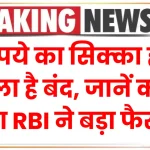
If you’re looking for a safe, government-backed investment with a high interest rate, you’ll want to take a close look at this post office scheme offering 8.2% annual returns. Whether you’re a retired senior, a young parent saving for your daughter’s future, or a professional building a diversified portfolio, this scheme might be the smartest place to park your money in 2025.
As of April to June 2025, the Government of India has kept the interest rate for two major Post Office savings schemes at 8.2%—a figure that outpaces most bank fixed deposits and even some mutual funds, while offering security, tax benefits, and fixed returns.
Post Office Scheme Offering 8.2% Interest
| Feature | Details |
|---|---|
| Scheme Name | Senior Citizen Savings Scheme (SCSS) and Sukanya Samriddhi Yojana (SSY) |
| Interest Rate | 8.2% per annum |
| Eligibility | SCSS: Indian citizens aged 60+ SSY: Girl child below 10 years |
| Investment Tenure | SCSS: 5 years (extendable by 3 years) SSY: 21 years |
| Tax Benefits | Eligible under Section 80C of Income Tax Act |
| Payout | SCSS: Quarterly interest SSY: Lump sum at maturity |
| Official Website | India Post Saving Schemes |
In 2025, when many savings instruments are offering moderate or volatile returns, Post Office schemes like SCSS and SSY stand out with a strong 8.2% interest rate, backed by the Indian government. Whether you’re planning for retirement, your daughter’s future, or simply looking for safe, long-term options, these schemes offer unmatched benefits in terms of security, returns, and peace of mind.
What Makes the 8.2% Post Office Scheme So Special?
Let’s break it down in simple terms: this scheme offers high interest, guaranteed returns, and government protection. That’s a rare combination in today’s unpredictable financial world.
With inflation hovering around 5% to 6%, a return of 8.2% means your money is actually growing in real value — not just keeping up, but outpacing inflation.
see also: Post Office Scheme: Deposit ₹60,000, Get Funds Worth More Than ₹16,27,284
1. Senior Citizen Savings Scheme (SCSS)
This is ideal for retirees looking for a safe, regular income post-retirement.
Here’s how it works:
- Anyone 60 years or older can open an account.
- You can invest up to ₹30 lakh in SCSS.
- Interest is paid quarterly and credited directly to your bank account.
- The interest rate is locked in when you open the account, so you’re protected even if rates fall later.
2. Sukanya Samriddhi Yojana (SSY)
This one’s crafted for parents saving for their daughter’s future education or marriage.
How it works:
- Open an account in your daughter’s name before she turns 10 years old.
- Invest up to ₹1.5 lakh per year.
- The scheme matures 21 years after the account is opened.
- Interest is compounded annually, and the maturity amount is completely tax-free.
Let’s Look at Real Examples
Example 1: SCSS – Safe Returns for Retirees
Mr. Sharma, a 62-year-old retired teacher, invests ₹15 lakh in SCSS in April 2025.
- Quarterly interest: ₹15,00,000 × 8.2% ÷ 4 = ₹30,750
- Annual return: ₹1,23,000
- Over 5 years, Mr. Sharma will receive ₹6,15,000 in interest, with his principal intact.
Plus, his investment is backed by the Government of India and offers Section 80C tax benefits.
Example 2: SSY – Wealth for Your Daughter
Anita, a mother of a 4-year-old girl, invests ₹1.5 lakh annually in the Sukanya Samriddhi Yojana.
After 15 years of investment, with 8.2% interest compounded annually:
- She would have deposited ₹22.5 lakh.
- At maturity (after 21 years), the corpus grows to ₹63+ lakh, completely tax-free.
That’s a safe, long-term wealth-building plan for her child’s future.
Why Choose a Post Office Scheme Over Bank FDs?
| Feature | Post Office SCSS/SSY | Bank Fixed Deposit (FD) |
|---|---|---|
| Interest Rate | 8.2% | 6%–7.5% (on average) |
| Tax Benefits | Yes (under 80C) | Limited |
| Government Guarantee | 100% | Partial (only up to ₹5 lakh via DICGC) |
| Withdrawal Flexibility | Limited but available with penalties | Moderate |
The trustworthiness of India Post and direct government backing gives these schemes an edge in safety, especially for conservative or risk-averse investors.
How to Open These Post Office Schemes
Let’s break it into easy steps:
For Senior Citizen Savings Scheme (SCSS):
- Eligibility: Must be 60 years or older.
- Visit your nearest Post Office or selected public sector banks (like SBI, PNB).
- Carry:
- Aadhaar Card
- PAN Card
- Passport-sized photographs
- Age proof (birth certificate or pension document)
- Fill out Form A for SCSS.
- Deposit amount via cheque or cash (up to ₹30 lakh).
- Get the passbook and start receiving quarterly payouts.
For Sukanya Samriddhi Yojana (SSY):
- Eligibility: Girl child below 10 years.
- Visit your Post Office with:
- Child’s birth certificate
- Parent/guardian’s Aadhaar and PAN
- Passport-sized photographs
- Fill out Form SSA-1.
- Deposit amount (minimum ₹250; max ₹1.5 lakh/year).
- Account passbook will be issued.
You can also manage your account online via India Post Internet Banking if registered.
see also: SBI We Care Scheme Is Giving Higher Interest and Stable Returns to Senior Citizens
Post Office Scheme 2025 FAQs
Q1: Is the 8.2% interest rate fixed forever?
No. It’s reviewed every quarter by the Ministry of Finance. However, once you open the account, the rate is locked in for the tenure of the scheme.
Q2: Can NRIs invest in SCSS or SSY?
No. These schemes are only available for resident Indian citizens.
Q3: Are there penalties for premature withdrawals?
Yes. In SCSS, you can withdraw early but will face a penalty of 1–1.5% on interest. In SSY, premature closure is allowed under special circumstances like marriage of the girl (after 18), or critical illness.
Q4: How do these schemes compare with mutual funds or SIPs?
Mutual funds may offer higher returns, but also carry market risks. These Post Office schemes are zero-risk, fixed-income options best suited for capital preservation and stable returns.
Q5: Can I open more than one account?
- In SCSS: Yes, joint account with spouse is allowed.
- In SSY: Only one account per girl child, maximum two accounts per family (for two girls).











